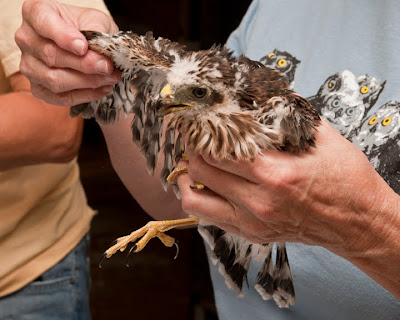
Saturday, June 19, 2010
This Week at Liberty 06/21/2010

Monday, June 14, 2010
Hoots, Howls, and Hollers 06/14/2010
In his wisdom John Muir said, “When one tugs at a single thing in nature, he finds it attached to the rest of the world.” We are interconnected, and there is no way around that truth. With that in mind I have a few thoughts on the current disaster in the Gulf. My apologies if you want to plug your ears and run screaming into the street. Bear with me.
Every time I receive some media related to the oil spill I want to shout at the top of my lungs: “MAKE IT STOP!” I not only mean the oil spill, but also I mean the blaming, criticizing and out guessing….it isn’t productive, doesn’t make a difference, doesn’t heal anything. We need to look at ourselves and take personal responsibility for the part we play…you know what I mean.
The extremes of opinions on the subject are vast. I heard a biologist from the northwest criticizing rehabilitators for working so hard to help the oiled animals. His justifications for his pontifications were that in the 1989 oil spill in Alaska there didn’t seem to be much success with the released oiled birds…many of the tagged birds didn’t live more than a few days….so he says. But, there was a tagged pelican that lived at least 19 years…not too shabby. I would like to see his results. There were many variables at work that might have impacted things. I just don’t buy it!
And, we in the rehab community have come a long way since 1989. We know now that certain things predict success in the release of these damaged animals: the species affected (loons and grebes are very delicate while gulls and penguins and probably pelicans are much tougher), the time the animal has been oiled, the amount of internal impact on the gastro-intestinal system, or the damage to the respiratory system to name a few. We also evaluate the time and situation of releases much better. Since the oil industry is using the same methods to plug the well that they have used since the 1979 spill in the Gulf of Mexico with the same poor results I would say that maybe the rehabbers are the ones that have learned since then and should be recognized rather than chastised for their work.
At the other end of the extreme are people like me who are devastated watching the reports of damaged animals suffering and dying through no fault of their own. Every compassionate person, rehabber or not, feels frustrated at not being able to do anything about the mummified looking pelicans or the dead and dying sea turtles gasping their last breaths. At Liberty there are many individuals who would love to go to help and because of our reputation we would certainly be welcomed.
I have those thoughts too, but I keep thinking of Muir’s quote and realize that what we are doing here is important also. We need to make sure that in the horror of the nightmare in the Gulf that we don’t forget about the fragility of all wildlife…. especially our desert animals. When there is something horrific happening every second of every day in a specific area it is easy for it to take precedence over all other things, but with this we run the risk of crowding out all of the environmental issues that we fight for daily. These issues remain worthy of our attention and let me remind you of their interconnectedness…..”he finds it attached to the rest of the world.”
No matter where you stand on the continuum there is a right way. Let’s acknowledge that all of these animals, no matter where they are and who, through no fault of their own, are injured and suffering, deserve a second chance. The right way is to do something to help somewhere. Leave a positive mark. You may be a “think globally, act locally person” or just the opposite. It doesn’t matter…just do something. And finally, do it year round, not just in a catastrophic situation. We (including our wildlife neighbors) will all be better for it.

This Week at Liberty 06/14/2010





































